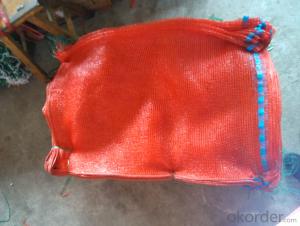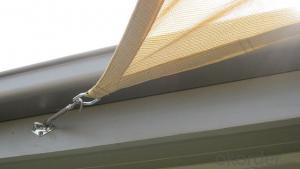Shade cloth water-proof cloth sail 230g 4.2x100m
- Loading Port:
- Ningbo
- Payment Terms:
- TT OR LC
- Min Order Qty:
- -
- Supply Capability:
- 50000pcs pc/month
OKorder Service Pledge
OKorder Financial Service
You Might Also Like
Shade Sail water-proof cloth sail 160GSM
Material: 100% virgin HDPE
Using life: 5 ~10 years Gurantee
Export market: Europe ,America,Japan, the Middle East ,Africa
Shape: Square, Triangle , Rectangle
Net weight: 160g/m2--320g/m2
Size: 3x3m, 3.6x3.6m 3x3m, 3x3x3m,5x5m,5x5x5m and so on UV block: 85-95%
Packaging & DeliveryPackaging Detail: Each piece of sail will be put into a pvc hadle bag with a color label inside, seveal pcs packaging into a paper carton with shipping mark.
Application:
It could be used in the outdoor in home and garden , kindgarden.
Delivery time :
we could ship at once if our regular size .
- Q: How much weight can a nursery tray hold?
- The weight capacity of a nursery tray can vary depending on its design and materials. However, most nursery trays are designed to hold around 1-2 pounds of weight per cell or compartment.
- Q: Can ground cover be used to create a living wall?
- No, ground cover cannot be used to create a living wall. Living walls are typically made using vertical structures and plants that are specifically chosen and arranged to grow vertically. Ground cover plants are low-growing and spread horizontally to cover the ground, making them unsuitable for creating a living wall.
- Q: What are some ground cover options for sandy soil?
- Some ground cover options for sandy soil include beach grass, creeping juniper, lamb's ear, ice plant, and thyme.
- Q: I will make potato, milk, and gelatin homemade plastic. and get a sample of a corn based biodegradable plastic. What should my question be?
- tricky step. research onto google or bing. just that can help!
- Q: Do nursery trays come with a self-watering feature?
- No, nursery trays typically do not come with a self-watering feature.
- Q: How is agricultural plastic used in farming?
- Agricultural plastic is used in farming for a variety of purposes. It is commonly used for mulching, which involves placing plastic sheets on the soil surface to suppress weeds, conserve moisture, and regulate soil temperature. Plastic films are also used for greenhouse coverings, creating a controlled environment for plants to grow. Additionally, agricultural plastic is used for crop protection, such as covering fruits or vegetables to shield them from pests or extreme weather conditions. Overall, the use of agricultural plastic in farming helps improve crop productivity, reduce water usage, and protect crops from various threats.
- Q: What is the best ground cover for a rooftop garden?
- One of the best ground covers for a rooftop garden is sedum. Sedum is a low-maintenance plant that thrives in sunny conditions, has excellent drought tolerance, and adds a beautiful carpet-like appearance to the rooftop. It also helps with insulation and stormwater management, making it an ideal choice for a rooftop garden.
- Q: This question asks about the impact of agricultural plastic products on the well-being of animals.
- <p>Agricultural plastic products, such as plastic mulch films and nets, can significantly affect animal welfare. These products, when not properly managed, can lead to entanglement or ingestion by animals, causing injury or death. Entanglement in plastic nets can restrict movement, leading to stress and physical harm. Ingestion of plastic can cause blockages in the digestive system, malnutrition, and even starvation. Additionally, the decomposition of plastic releases harmful chemicals into the soil and water, which can affect the health of animals and their food sources. Therefore, it's crucial to manage agricultural plastics responsibly to minimize their negative impact on animal welfare.</p>
- Q: what is the best thing to buy to mold/hold plastic to plastic so it never breaks apart agian? please help me, its my treadmill and i really want to fix it again so it doesnt break. thanks.
- extremely tough thing. try searching into bing and yahoo. that could help!
- Q: Can nursery trays be used for growing native plants?
- Yes, nursery trays can be used for growing native plants. These trays provide a controlled environment for seed germination and early growth, ensuring optimal conditions for the development of native plants. They also allow for easy transplanting once the plants have reached an appropriate size, making them a practical choice for growing native plants.
Send your message to us
Shade cloth water-proof cloth sail 230g 4.2x100m
- Loading Port:
- Ningbo
- Payment Terms:
- TT OR LC
- Min Order Qty:
- -
- Supply Capability:
- 50000pcs pc/month
OKorder Service Pledge
OKorder Financial Service
Similar products
Hot products
Hot Searches
Related keywords

























